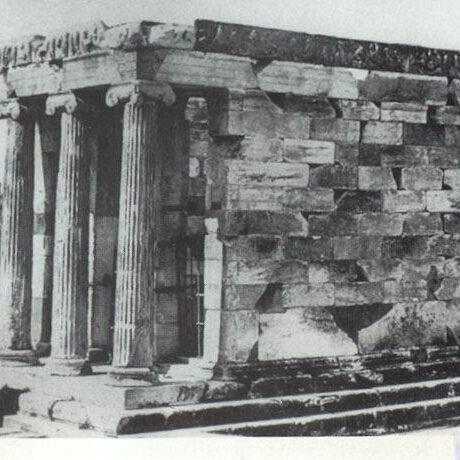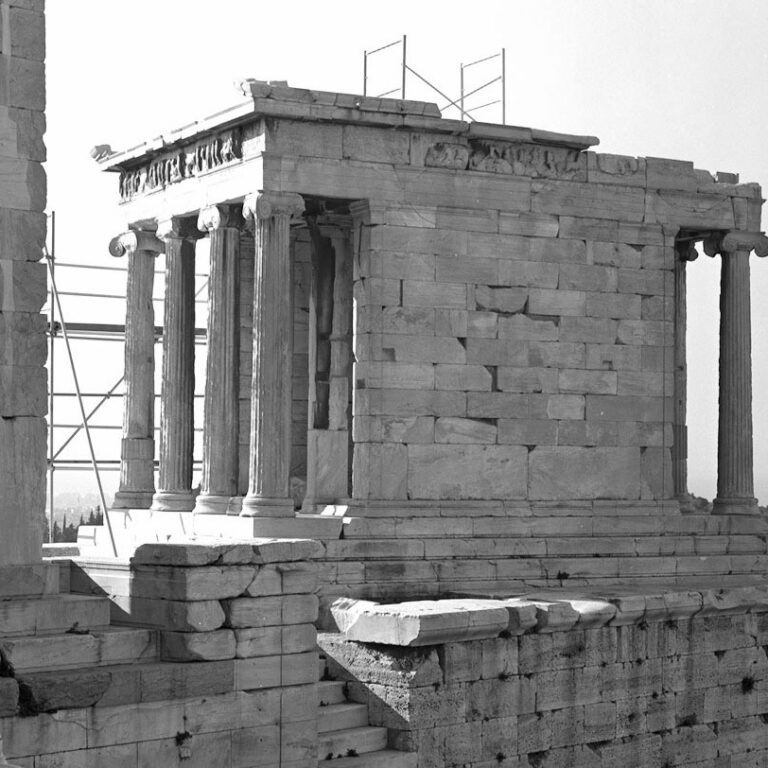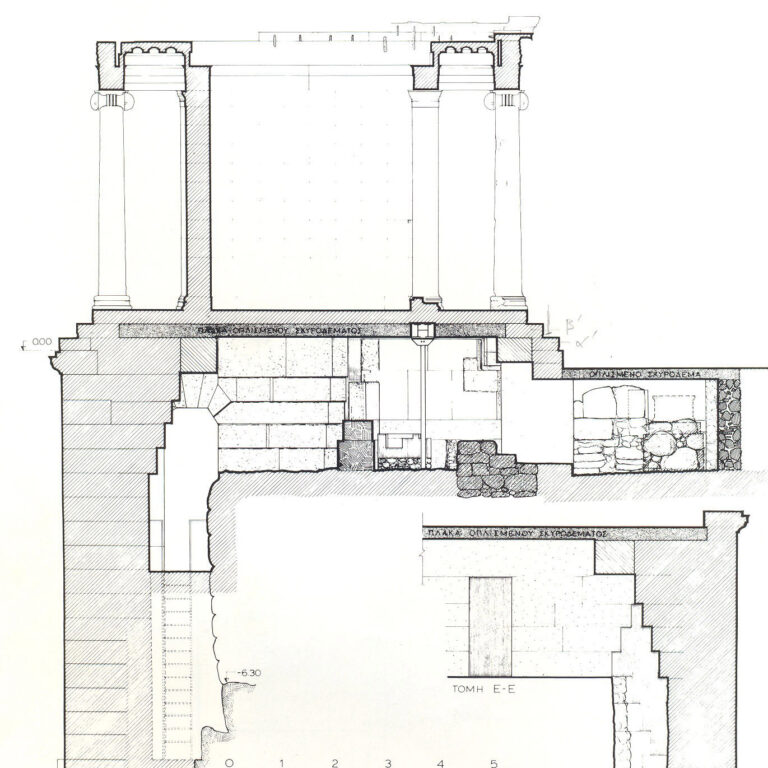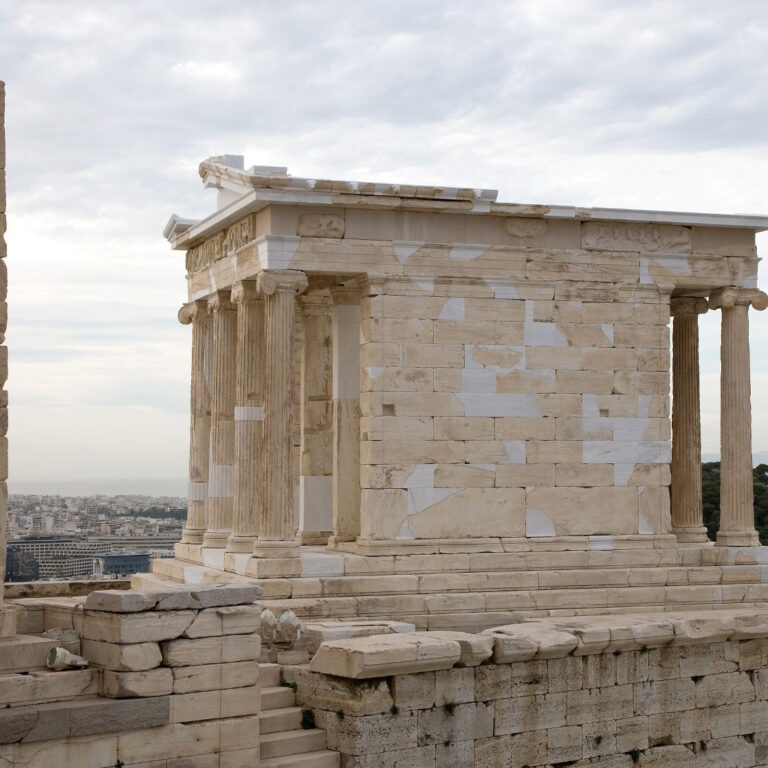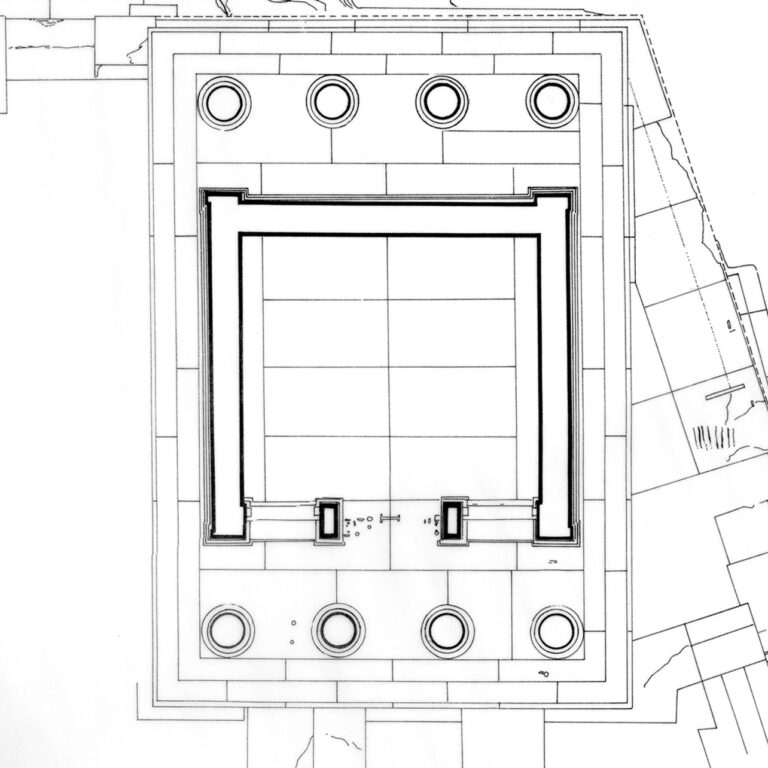
The temple of Athena Nike, a temple in the Ionic order, tetrastyle, amphiprostyle, was constructed during the years between 427 and 424 B.C. on the bastion that from Mycenaean times had guarded the entrance to the Acropolis from the southwest. The temple occupied the site of an earlier poros shrine of Kimon’s time. The remains of that first stone temple, which housed the wooden statue or xoanon of the goddess Athena that had escaped the Persian destruction of 480 B.C was revealed alongside the base of the archaic cult figure in 1936. Today these are preserved together with the underlying mycenean tower, in a specially arranged basement space in the classical bastion. Ever since the times of the Persian wars, Athena was worshipped here as the goddess who bestowed victory in military confrontations.
The classical temple of Athena Nike, built entirely of Pentelic marble, is attributed to the architect Kallikrates. It is a small building, yet it is distinguished for its charm and elegance. Two colonnades, comprising each four monolithic Ionic columns, frame the little cella on the east and west façades. Of particular interest is the sculptural decoration of the temple. Most of the pedimental sculpture has been lost, but the Gigantomachy is likely to have decorated the east pediment, and the Amazonomachy the west. Represented on the frieze of the temple, which runs around the cella on all four sides, is a gathering of gods (east), battles between Greek and Persian horsemen (south) and battles of Greek warriors with other warriors (the other two sides). Most of these sculptures have survived in good condition and are now exhibited in the Acropolis Museum, with the exception of those carried off by Lord Elgin at the beginning of the 19th century and placed on exhibit in the British Museum.
The monument was torn down to the level of the krepis by the Ottomans in 1686, on the eve of Morosini’s incursion into Attica. The building material was used to strengthen the fortifications of the entrance to the Acropolis. When that fortification was torn down in 1835, the krepis and architectural members of the temple were discovered. The first restoration of the monument, by L. Ross – E. Schaubert – Ch. Hansen – K. Pittakis (1835-1845), which followed immediately, was the first intervention on the Acropolis monuments. The second restoration of the monument was carried out by N. Balanos and A. Orlandos (1935-1940), in order to cope with the very serious possibility that the classical bastion, on which the temple stood, might collapse. Fifty years later, the need to resolve all the structural problems of the monument and to correct earlier mis-settings, meant that a new restoration had to be undertaken, which was carried out between 2000 and 2010.


